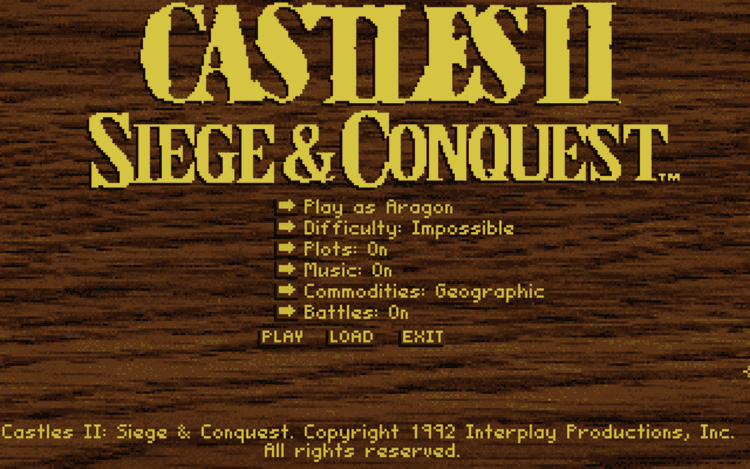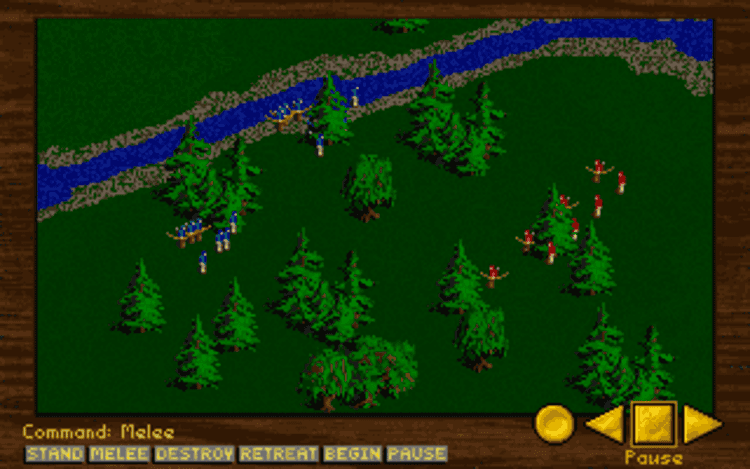
Castles II: Siege & Conquest is a grand strategy game from Interplay that invites you to claim a fractured medieval Brittany through shrewd diplomacy and unrelenting warfare. Players juggle political intrigue, castle construction, and real‑time battles in a seamless blend that feels as gripping today as ever. Fans of Defender of the Crown will recognize the romantic struggle for territory, while those who cherish the expansive planning of Civilization will appreciate the layered decision‑making. Whether you explore it on modern hardware or simply enjoy the classic experience, this game offers enduring depth, making every campaign feel freshly challenging each time you play.
Interplay’s Castles II: Siege & Conquest emerged in the early 1990s as a bold sequel that refined the original’s ideas and expanded them into a sweeping campaign for the throne of Brittany. The narrative premise is simple yet compelling: the Breton crown is vacant, rival nobles jockey for influence, and the king of France watches from across the marches, ready to endorse—or crush—the contenders. Where many contemporaries offered battle alone, Castles II marries diplomacy, economics, and real‑time warfare into a single, cohesive experience. Each decision—be it arranging a marriage alliance, investing in a quarry, or hurling troops against a rival’s fortress—carries weight across multiple interwoven systems. The result remains one of the era’s most sophisticated strategy offerings, a game whose depth rewards both careful planners and audacious risk‑takers.
At the heart of Castles II lies a delicate balance between raw military might and subtle political maneuvering. You will draft edicts in council chambers, negotiate with the clergy for legitimacy, and send spies slinking through candlelit corridors to sway barons or sabotage enemy keeps. Meanwhile, fields demand taxes, artisans demand wages, and the specter of rebellion lurks if you neglect your subjects. Battles unfold in real time, yet they hinge on the preparation you invested earlier: sturdy walls, plentiful provisions, and carefully recruited mercenaries can tip the scales before a single sword is drawn. Despite its vintage, the game’s AI remains impressively reactive, forcing you to adapt strategies rather than rely on rote build orders. Each campaign thus becomes a unique tapestry of alliances forged, betrayals endured, and castles—proud or ruined—dotting the verdant map of Brittany.
Modern emulation makes it effortless to dive into Castles II without dusting off heritage hardware. You can play Castles II: Siege & Conquest online entirely free, straight from a browser, with no downloads or installations beyond a quick click. Touch‑friendly controls mean the strategic map, council menus, and siege screens translate smoothly to mobile devices, letting you plan assaults or levy taxes on the go without restrictions. Because the underlying DOS code is lightweight, loading times are negligible, preserving the snappy feel that once graced CRT monitors. Whether you command your faction from a desktop, tablet, or phone, the experience remains faithful to the original vision, complete with stirring MIDI fanfares and chunky pixel art castles rising against rolling green hills.
Why does Castles II continue to entice newcomers decades after its debut? Part of the attraction is its rare blend of accessibility and nuance. The interface presents information in clear, icon‑driven panels, yet behind every button lie layers of strategic possibility. A novice can field forces quickly, but a veteran will tweak tax rates, study morale graphs, and time assaults to coincide with rival wars, maximizing chaos to snatch fertile provinces. The audiovisual presentation, though retro in palette, conveys atmosphere through heraldic banners, trumpet flourishes, and an evocative medieval soundtrack that underscores tense negotiations and thunderous sieges alike.
Controlling the game is intuitive: a mouse click selects provinces, orders engineers to raise curtain walls, or directs cavalry flanking maneuvers; keyboard shortcuts speed up movement across the campaign map and pause hectic real‑time clashes for precise commands. This streamlined scheme ensures that strategic planning never feels bogged down by interface friction, allowing the drama of contested crowns to unfold naturally.
Castles II: Siege & Conquest endures because it invites imaginative storytelling. Each session spins a fresh chronicle—perhaps your pious lord courts the Church, only to face excommunication after funding a clandestine rebellion, or maybe an underdog duchess unites scattered fiefdoms through marriages, then storms the capital in a single climactic siege. No two games feel alike, ensuring infinite replay value long after the final fortress stone settles.
Castles II remains a shining example of strategic game design—broad in scope, focused in execution, and endlessly replayable.
The game’s source code and assets are publicly available, and Castles II: Siege & Conquest remains the rightful property of its original authors. Even today, the allure of forging a kingdom, brokering treaties, and battering mighty gateways endures, ready for any player who dares to chase the Breton crown.
Share game
Share game








Share game